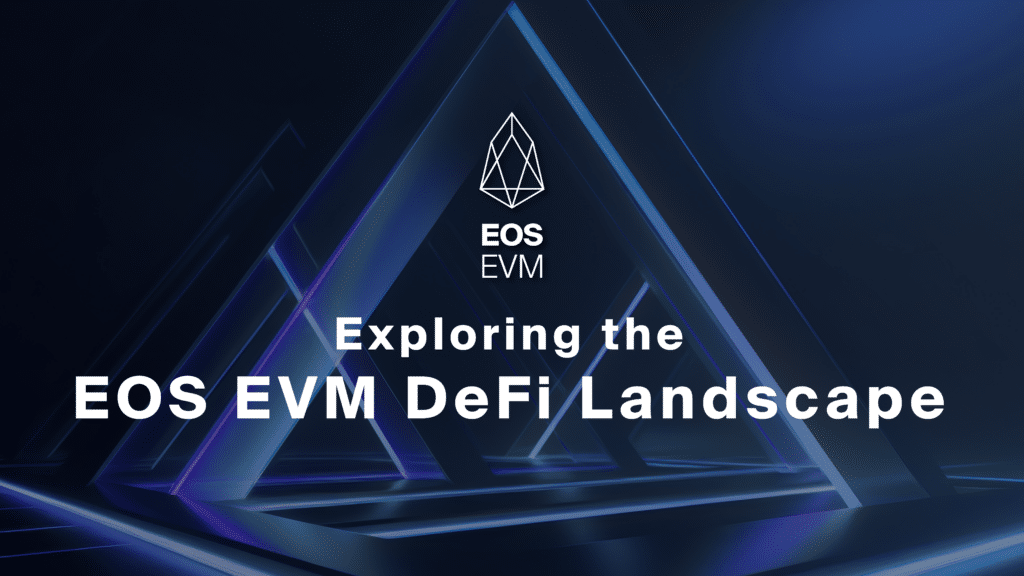DeFi, We Have A Problem
In a space already marred by exit scams, memecoins, and moonboys, the more than $2b in DeFi hacks in 2022 alone represents an unacceptable risk to smart money looking for growth opportunities in the emerging blockchain industry.
So far, major blockchain projects have treated the existence of massive hacks, exploits, and accidents, as the unavoidable consequence of a design philosophy known as “code is law”. More than one network has been ripped in two as the result of disputes that have arisen over how to respond to such events.
Those in the crypto industry have begun to realize that letting attackers run wild and determine network outcomes is not conducive to business, or sanity.
Mainstream adoption of DeFi products won’t happen unless these risks can be mitigated. Fortunately, EOS has a solution.
The Recover+ Solution
Recover+ (R+) is a cyber-security portal and rapid incident response program. It’s designed to safeguard EOS DeFi projects and their users through the use of bug bounties and white-hat incentives. It also offers an avenue to move swiftly and recover stolen funds in the event of a malicious hack.
Forming a new type of DeFi insurance layer for the EOS Network, R+ allows project developers on EOS to opt-in and gain access to valuable tools and information. Those engaged in this program are also connected to professional security experts who will assist in coordinating a comprehensive response to hacking incidents.
In the event of a hack, R+ provides a formalized process through which EOS block producers (BPs) are presented with thoroughly analyzed and verified information regarding a hacking incident. This new standard flow of vetted information through R+ allows BPs to take action, confident in all the details of the situation. When necessary, they can move quickly to recover compromised funds by leveraging the unique properties of EOS account permissions and its Delegated Proof of Stake (DPoS) consensus algorithm.

“Recover+ is a tool that developers can use to build confidently and securely. In case of an extreme event, Recover+ can be accessed to help recover from the event.”
Big Yield, Big Security
In addition to Recover+, EOS recently introduced Yield+, an EOS liquidity incentive and rewards program. This creates an increasingly attractive sum of funds, to hackers and users alike. As growing capital moves through an ecosystem composed of yield-bearing DeFi smart contracts, bridges, and more, Recover+ has a crucial role to play.
Together, Yield+ and Recover+ form a complementary pair of programs supporting the growth of the EOS ecosystem. While Yield+ is aimed at increasing TVL on EOS, R+ is tasked with protecting that value.
To be approved for participation in Yield+, all DeFi protocols must be registered with Recover+. As a consequence of this synergy, not only will the participating DeFi protocols in Yield+ have the best yields, but they will also be the most secure.
Foxes Guarding the Henhouse
Sophisticated hackers aren’t the only threat to users’ funds. As we’ve seen time and again, when the foxes end up guarding the hen house, insiders can be tempted to run off with resources they have been charged to protect.
The requirement of KYC for participation in Recover+ adds identity, reputation, and ultimately, accountability to DeFi protocols. This helps to protect users from rug pulls or inside jobs.
More sophisticated schemes can be thwarted by the presence of Recover+ as well. An example being the recent illusion of TVL created through “a complex web of decentralized finance (DeFi) services based around a Solana stablecoin exchange called Saber”. These exploits rely on bogus identities and deception, but are also non-starters in an ecosystem that rewards transparency and accountability.
A Brief History of Recovering Hacked Funds on EOS
As with the broader industry, DeFi smart-contracts on EOS and related bridges have had to deal with a few major hacks in the past. These breaches became case studies in how a DPoS network such as EOS can choose to respond in a way that protects users.
It has forced the EOS community to deeply consider the “Intent of Code is Law” design philosophy that was envisioned by the builders of the network. This is made possible by the unique account permission structure and DPoS consensus algorithm on EOS.
The Vaults.sx Re-entry Exploit
On May 14, 2021, a re-entry exploit on the flash.sx smart contract led to the theft of approximately 1.18M EOS and 462K USDT from the vaults.sx smart contract. This prompted a historic back and forth between the attacker, EOS Nation, and EOS BPs, which saw the hacker attempt to split and escape with funds by distributing them across 246 accounts. The affected accounts were frozen by a super-majority consensus of EOS BPs and EOS Nation announced that the funds are safe. After confirming their identity on-chain, the hacker publicly apologized for all the trouble they caused, and consented to the nulling of their keys. All users were ultimately made whole.
This Vaults.sx Retrospective blog article provides a concise timeline and thoughts on the events of the SX.vault hack.
The eCurve and PIZZA Lend Hack
Another incident occurred on December 8th, 2021, when an attacker exploited eCurve, which allowed them to print unlimited collateral to drain PIZZA Lend. The total amount of stolen assets was valued at around 10 million USD. In a sophisticated effort to escape with the funds, the hacker moved the funds to 1.37m different accounts. PIZZA moved swiftly to verify all accounts, working with all affected parties, and started to write an MSIG proposal that would restrict the 1.37 million target hacker accounts. The hacker asked for a $3 million ransom and threatened to send all stolen funds to normal users if the BPs attempted to restrict his accounts. PIZZA contacted all 21 BPs and decided to move ahead with the proposal to restrict the accounts. The hacker noticed the proposal voting was underway and repeated their threat to redistribute all funds across normal user accounts. Negotiations between the hacker, PIZZA, and EOS BPs then carried on for four hours, at which point 15 of 21 BPs approved the proposal to restrict the accounts, and the hacker relented. In the end, a $500k bounty was agreed upon, and the rest of the funds were returned by the hacker without the network ultimately needing to intervene.
PIZZA provided a summary of events on their Medium.
The Takeaway
The Recover+ working group, which led to the drafting of the Recover+ Blue Paper and the creation of the R+ cyber-security portal, was born from deep contemplation and retrospective analysis of early ad hoc responses to major exploits on the network, their shortcomings, and their successes.
Previously, the tools were available, but there was no universally available method for EOS based DeFi projects to respond to such attacks. Seeing this, the architects of R+ set out to devise a system that was equally available to all EOS DeFi projects and token holders, and Recover+ was born.

“Compared to other working groups, Recover+ is the first one that faces the ideological problems of blockchain head on. Let’s use the Binance hack in early October as an example, they shut down the entire chain in order to stop the hack. There were some other hundred-million-dollar hacks that happened on BSC but only when it hurts the real owners of the chain do they choose to immediately ignore their “decentralization ideology”. The DAO hack of Ethereum is another similar example: big players get hurt, big players claimed to be a game changer.
Recover+, on the other hand, is the first instance of a public chain offering users the same opportunities to be covered under an actual on-chain governance system when they encounter a hacking incident. It’s a symbol that this network does not do certain things to just make it look pretty, it does things that its people consider right and universally beneficious; in this case: protect users’ assets from hacking attacks.”
The Continued Evolution and Adoption of Recover+
Recover+ is laying the foundations needed to build a better future for individual projects, white-hat hackers, and the EOS Network itself. A future that thrives and is free from the constant fear of smart contract vulnerabilities.

At the time of writing, Recover+ is serving 19 projects with a total TVL of $47m USD. The team periodically performs practice runs, like firedrills, on a testnet. R+ offers bug bounties and continues to prepare for any eventuality.
By improving communication among major EOS block producers and project developers, Recover+ will create a safer and more reliable enterprise environment for businesses building on the EOS Network.
EOS Network
The EOS Network is a 3rd generation blockchain platform powered by the EOS VM, a low-latency, highly performant, and extensible WebAssembly engine for deterministic execution of near feeless transactions; purpose-built for enabling optimal web3 user and developer experiences. EOS is the flagship blockchain and financial center of the Antelope framework, serving as the driving force behind multi-chain collaboration and public goods funding for tools and infrastructure through the EOS Network Foundation (ENF).
EOS Network Foundation
The EOS Network Foundation (ENF) was forged through a vision for a prosperous and decentralized future. Through our key stakeholder engagement, community programs, ecosystem funding, and support of an open technology ecosystem, the ENF is transforming Web3. Founded in 2021, the ENF is the hub for EOS Network, a leading open source platform with a suite of stable frameworks, tools, and libraries for blockchain deployments. Together, we are bringing innovations that our community builds and are committed to a stronger future for all.



